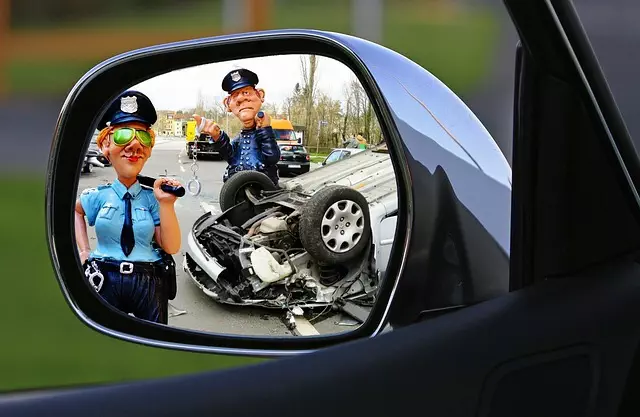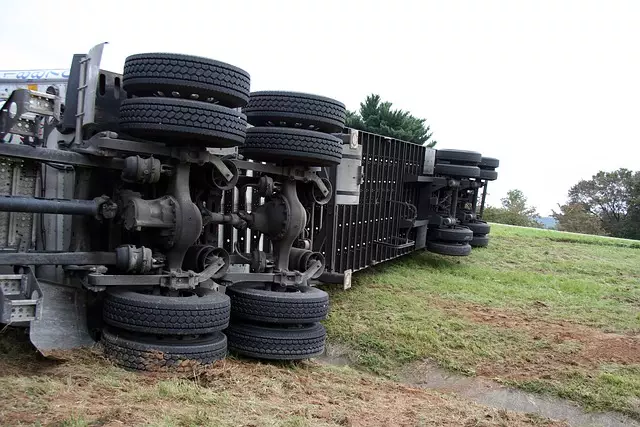Rideshare companies in New York City (NYC) face growing challenges related to car accidents and cell phone use, with significant legal implications. Despite laws prohibiting handheld device use while driving, navigation apps and passenger requests create dangerous distractions for drivers. This has led to increased litigation against rideshare firms as victims seek accountability for injuries caused by negligent drivers using mobile devices during trips. To address this issue, stricter liability laws and enhanced safety standards are being discussed, with a focus on preventing driver distraction through improved company policies, vehicle inspections, and technology monitoring. Both rideshare companies and passengers must collaborate to prioritize safety and reduce car accidents and cell phone use in NYC's bustling environment.
Rideshare services have revolutionized urban transportation, but they also raise critical safety concerns. This article delves into the complex landscape of rideshare safety litigation, focusing on New York City as a case study for high cell phone use behind the wheel. We explore the legal responsibilities of rideshare companies and drivers in the event of car accidents, analyzing emerging legal strategies for victims. Understanding these dynamics is crucial to enhancing road safety and ensuring accountability for negligent practices.
- Understanding Rideshare Safety and Legal Responsibilities
- The Impact of Cell Phone Use During Drivesharing in NYC
- Car Accidents Involving Rideshare Drivers: A Growing Concern
- Legal Strategies for Litigation Against Rideshare Companies
- Ensuring Safe Practices: Roles and Responsibilities
Understanding Rideshare Safety and Legal Responsibilities

Rideshare companies operate in a tight balance between providing convenient transportation and ensuring passenger safety. Understanding the legal responsibilities that come with this role is crucial, especially when it comes to issues like car accidents and cell phone use. In cities like New York City (NYC), where ridesharing services are bustling, drivers are held to high standards of care to prevent accidents and protect passengers.
Cell phone use while driving, for instance, is a significant concern due to its potential to distract both the driver and other road users. NYC has strict laws against text messaging and handheld devices while operating a vehicle, with penalties designed to deter dangerous behavior. Rideshare companies also have legal obligations to ensure that their drivers maintain safe practices, including regular vehicle maintenance and adherence to traffic regulations. This includes not only local laws but also industry best practices aimed at minimizing risks in car accidents.
The Impact of Cell Phone Use During Drivesharing in NYC

In New York City, where ridesharing is a ubiquitous part of daily life, the impact of cell phone use during drivesharing has significant implications for safety. With countless drivers navigating congested streets and frequent stops, the temptation to check texts, make calls, or scroll through social media can be overwhelming. Despite strict laws prohibiting handheld device use while driving, enforcement remains challenging. This, coupled with the constant stream of passenger requests and navigation apps, creates a perfect storm of distractions behind the wheel.
Car accidents and cell phone use in NYC have led to increased litigation, as victims seek accountability for negligent drivers. Studies show that driver distraction contributes to a substantial number of crashes, injuries, and fatalities. As such, rideshare companies face heightened scrutiny regarding their safety measures and policies related to driver behavior, particularly when it comes to the use of mobile devices during trips.
Car Accidents Involving Rideshare Drivers: A Growing Concern

Car accidents involving rideshare drivers, particularly in bustling cities like New York City (NYC), have become a growing concern. With an increasing number of rideshare services operating in NYC, the frequency of car accidents has also risen, highlighting the need for enhanced safety measures. One of the primary factors contributing to these accidents is cell phone use while driving. Despite efforts to regulate and educate drivers about the dangers, many still engage in this behavior, putting passengers and other road users at risk.
In NYC, where the density of traffic and pedestrians is high, car accidents caused by distracted rideshare drivers can have severe consequences. This has prompted legal actions and litigation, with plaintiffs seeking compensation for injuries suffered in such accidents. Rideshare companies are also facing increased scrutiny from regulatory bodies and courts, leading to discussions about stricter liability laws and improved safety standards.
Legal Strategies for Litigation Against Rideshare Companies

When navigating Rideshare Safety Litigation, understanding legal strategies is paramount. One key aspect involves addressing the issue of driver distraction, particularly during car accidents and cell phone use in NYC. Lawyers often focus on demonstrating that rideshare companies have a duty to ensure their drivers are not engaged in activities that divert their attention from the road, such as texting or using navigation apps while driving.
This can involve examining company policies, training materials, and driver behavior records to show negligence. Additionally, experts may be utilized to provide testimony on the impact of distracted driving, enhancing the case’s credibility. Gathering compelling evidence, including CCTV footage, witness statements, and phone records, is crucial in establishing liability and securing compensation for victims affected by car accidents related to cell phone use in NYC rideshare services.
Ensuring Safe Practices: Roles and Responsibilities

Ensuring safe practices in rideshare services is paramount, with companies like Uber and Lyft holding significant responsibility for passenger safety. In New York City, where car accidents and cell phone use are prevalent issues, these companies must prioritize implementing robust safety measures. This includes rigorous driver screening, regular vehicle inspections, and advanced technology to monitor driver behavior, such as apps that detect and discourage cell phone use while driving.
The onus does not rest solely on rideshare firms; passengers also play a crucial role in maintaining safety. Aware of the risks associated with distracted driving, users must uphold their end by adhering to company policies, reporting any unsafe behaviors, and ensuring they provide clear instructions to drivers to prevent misunderstandings that could lead to accidents. Collaborative efforts between companies, regulators, and riders are essential to fostering a culture of safety in NYC’s rideshare industry.
Rideshare safety litigation is a pressing issue in New York City, where car accidents involving rideshare drivers are on the rise. The combination of cell phone use during drivesharing exacerbates this problem. Understanding the legal responsibilities of both riders and rideshare companies is crucial for ensuring safe practices. By examining the impact of cell phone distractions and implementing effective legal strategies, we can foster a safer rideshare environment in NYC. Through collective efforts, we can mitigate risks and protect all users on the roads.
